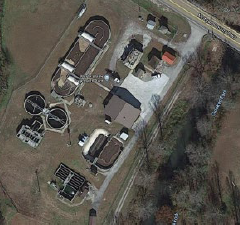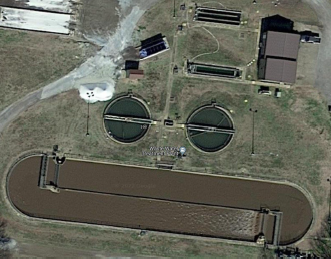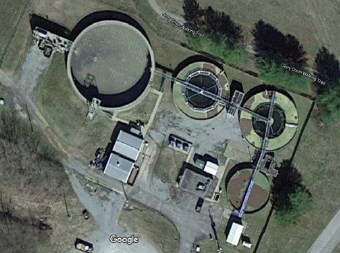TNPOP Case Studies
This section features case studies from Tennessee water and wastewater systems that participated in TDEC’s Energy Efficiency Partnership or Nutrient Optimization Program, showcasing real-world improvements such as reduced energy costs, enhanced nutrient removal, and better permit compliance through plant optimization.
Introduction to Case Studies
Explore the Successes of Tennessee Water and Wastewater Facilities
Tennessee’s water and wastewater treatment plants that have participated in the TNPOP program have achieved impressive results in areas like energy savings, nutrient optimization, and regulatory compliance. These case studies provide a glimpse into the measurable benefits that can be achieved through plant optimization.
Over a five-year period, the partnership conducted energy assessments at 41 water and wastewater facilities across Tennessee.
| Impact of Low-to-No-Cost Recommendations (Wastewater Facilities) |
|---|
| 19% average reduction in annual energy costs |
| 40% average reduction in nutrient discharge |
| Measured Annual Savings through 2015 | |
|---|---|
| Savings | Amount |
| Cost Savings | $1,500,000 |
| Energy Savings | 15,000,000 kWh |
| Carbon Emissions Reduced | 13,000 tons CO₂ |
| Reduction Identified Annual Savings since 2016 (to be verified) | |
|---|---|
| Savings | Amount |
| Cost Savings | $390,468 |
| Energy Savings | 4,358,200 kWh |
| Nutrient Reduction | 95 tons |
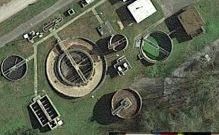
Carthage Wastewater Treatment Plant
Empowered by Local Leadership, Driven by Efficiency
In 2017, with strong backing from the Mayor and Town Council, the Carthage Wastewater Treatment Plant joined the Energy Efficiency Partnership. The assessment, conducted by experts from the University of Memphis and the University of Tennessee's Municipal Technical Advisory Service, identified actionable strategies for improvement.
- 19% reduction in total energy usage
- 19% cut in energy-related operating costs
- 85,000+ kWh saved annually through low- and no-cost upgrades
These improvements not only reduced environmental impact but also delivered lasting financial savings for the town.
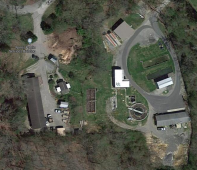
Norris Water Commission
Proving That Low-Cost Changes Can Deliver High-Impact Results
Since 2016, the Norris Water Commission has actively embraced innovative, low-cost strategies to improve water quality and energy efficiency by voluntarily participating in TDEC’s Wastewater Nutrient Plant Optimization Project. Using the techniques learned through the program, Norris has achieved remarkable environmental and operational outcomes:
- 17.6% reduction in average monthly electricity use
- 84% decrease in total nitrogen discharged
- 25% reduction in total phosphorus levels
- Lower energy costs
- Less sludge produced
- Improved effluent quality before discharge to surface waters
These ongoing results highlight Norris’s commitment to sustainable practices and the long-term value of optimization, without the need for major capital investment.
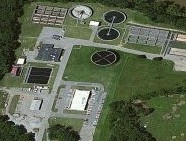
City of Columbia
Leadership, Smart Adjustments, and Impressive Results
In 2011, Mayor Dean Dickey accepted an invitation for the City of Columbia Wastewater Treatment Plant to join the Energy Efficiency Partnership. Following an in-depth assessment, the Partnership team recommended operational improvements, including reduced aeration and modified UV control.
- 24% reduction in total energy use
- $160,000 in annual energy cost savings
- $0 in capital expenditures
Through strategic operational changes alone, Columbia achieved measurable improvements—demonstrating that strong leadership and smart optimization can drive significant results without major infrastructure upgrades.
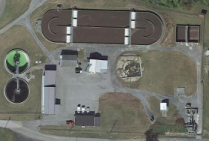
Church Hill, TN
Partnering for Progress on the Holston River
In 2016, the Church Hill Wastewater Treatment Plant accepted an invitation to join the Tennessee Water and Wastewater Energy Efficiency Partnership. Over the following five years, city and plant staff committed to reducing environmental impact and boosting operational efficiency.
- 35,800 tons/year reduction in nitrogen loading to the Holston River
- 310,000 kWh/year in energy savings
- $26,000/year in reduced energy costs
Church Hill’s results highlight how consistent effort and strategic optimization can deliver measurable environmental benefits and long-term savings—without requiring major capital investment.
Plateau Utility District: Wartburg STP
A detailed case study is on its way for the 2024 Nutrient and Energy Optimization Study at the Wartburg Sewage Treatment Plant (STP), operated by the Plateau Utility District. This forthcoming report will highlight key strategies, performance data, and outcomes in improving nutrient removal and energy efficiency.
City of Dyer WWTP
We are excited to soon share the 2024 Nutrient and Energy Optimization Study for the City of Dyer Wastewater Treatment Plant (WWTP). This upcoming case study will showcase the innovative solutions and impressive outcomes achieved in optimizing nutrient management and enhancing energy efficiency at the plant.
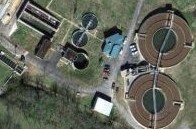
Fayetteville Public Utilities
Cutting Energy, Costs, and Nitrogen – All at Once
In 2011, the Fayetteville Public Utilities Wastewater Plant joined the Energy Efficiency Partnership to explore opportunities for improved performance and sustainability. The results exceeded expectations.
- Significant energy and cost savings
- Substantial CO₂ emissions reduction
- 50% decrease in Total Nitrogen discharge
Through targeted low- and no-cost strategies, the plant demonstrated how operational optimization can drive both environmental and financial impact.
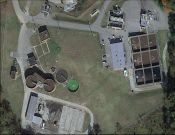
Lawrenceburg Utility Systems
Boosting Efficiency While Handling More Demand
In 2017, the Lawrenceburg Utility Systems Wastewater Treatment Plant partnered with the Energy Efficiency Partnership to explore ways to improve performance without major investment. After a site assessment in March 2017, the facility began implementing operational changes—and the results speak for themselves.
- 22% reduction in electricity costs
- 26% drop in electricity use
- $21,000+ in annual energy savings
Despite a 13% rise in plant loading, energy costs dropped—proving that smart optimization can offset rising operational pressures.
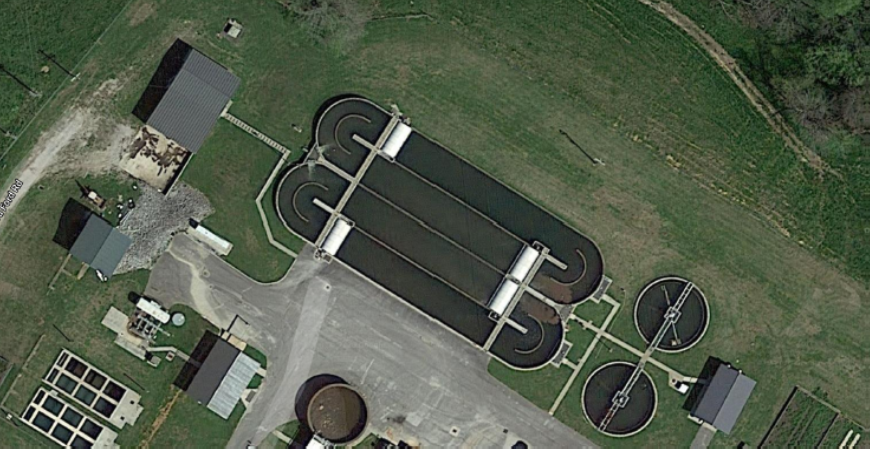
Harriman Wastewater Treatment Plant
Smart Solutions for Cleaner Water and Lower Costs
Starting in 2016, the Harriman Wastewater Treatment Plant took a proactive approach to improving performance at its aging facility by voluntarily joining TDEC’s Wastewater Nutrient Plant Optimization Project. Through this initiative, Harriman adopted innovative, low-cost strategies to enhance water quality and energy efficiency.
- Reduced electricity consumption
- Improved biological treatment performance
- Significant nitrogen and phosphorus removal before discharge
- Ongoing cost savings and environmental benefits
Using data collected between August 2017 and July 2019 as a performance baseline, Harriman has continued to build on these early improvements, demonstrating that even older facilities can achieve modern efficiency without major capital investment.
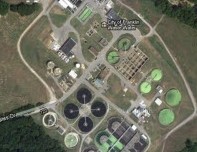
City of Franklin
A Leader in Energy Efficiency from Day One
The City of Franklin’s Water Reclamation Facility (WRF) joined the Energy Efficiency Partnership in its inaugural year, 2011—becoming one of the program’s earliest adopters. While many participants focused on traditional wastewater treatment facilities, Franklin took a different approach by targeting its Water Reclamation Facility for optimization.
Partnership assessments revealed key opportunities, and Franklin acted—implementing energy and process improvements that delivered major returns:
- $200,000+ in annual energy cost savings
- 13% reduction in annual energy use
- 1,835 tons of CO2 emissions eliminated per year
Franklin’s forward-thinking approach and commitment to resource recovery positioned its WRF as a model for sustainable facility operations across the state.
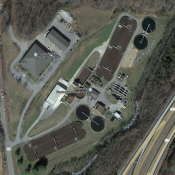
Cookeville Wastewater Treatment Plant
Reducing Costs, Improving Water Quality, and Lowering Energy Use
In 2015, the Cookeville Wastewater Treatment Plant joined TDEC's Wastewater Nutrient Plant Optimization Project, setting the stage for impactful changes in both environmental performance and operational efficiency.
- Nutrient Reduction: Successful removal of nitrogen and phosphorus before discharge to surface waters
- Energy Efficiency: By optimizing aeration processes, the plant reduced electricity consumption by 40.1%
- Cost Savings: A 36% reduction in energy costs, despite a 7.7% increase in electricity prices
- Sustainability: Reduced energy use and less sludge production, benefiting both the facility and the environment
Cookeville's journey began in January 2014, when staff were trained in techniques that reduced nutrient levels and energy consumption. By using less aeration equipment, the plant dramatically improved its operational efficiency, saving both energy and costs—proving that with the right approach, sustainability can also be cost-effective.
Town of Centerville WWTP
Stay tuned for an in-depth case study on the 2024 Nutrient and Energy Optimization Study at the Town of Centerville Wastewater Treatment Plant (WWTP). This upcoming study will highlight the innovative strategies and impactful results achieved in improving both nutrient management and energy efficiency at the plant.
Explore how communities across Tennessee are achieving nutrient and energy optimization through low- and no-cost operational strategies:
Highlighted Success Stories
- 2022 Final Report – Oneida and McMinnville
Comprehensive results from nutrient and energy optimization efforts in two cities. - Divide and Conquer: This Facility’s Approach to Reducing Nitrogen and Phosphorus
A strategic, phased approach leads to measurable nutrient reduction. - Through a Decade of Effort, Murfreesboro Achieves Dramatic Nutrient Reductions
Long-term commitment results in major effluent nitrogen and phosphorus decreases. - 2015 UCDD Final Report – Athens Supplement
Regional support and planning drive nutrient optimization outcomes. - The Tennessee Story: Optimizing Nutrient Removal at Municipal Wastewater Facilities
A statewide look at how utilities are improving nutrient management. - Cowan, TN Final Report
Small town, big gains in wastewater optimization. - Harriman, TN Final Report
Smart adjustments yield energy and nutrient removal improvements.
Program Impact
From 2015 to 2016, TDEC’s Division of Water Resources partnered with CleanWaterOps to deliver training and on-site technical support to municipal wastewater facilities across Tennessee.
Results Across 18 Facilities:
- Participation included 13 formal program facilities and 6 advisory-supported sites
- Significant operations & maintenance (O&M) savings
- Improved nitrogen and phosphorus removal
- More sustainable, cost-effective treatment without major capital investment
Additional Resources & Reports
- Tennessee’s Nutrient Reduction Framework
Strategic guidance for long-term nutrient control. - Wastewater Plant Optimization for Nitrogen & Phosphorus Removal – 2016 Final Project Report
Summary of training, outcomes, and technical strategies. - Nitrogen & Phosphorus Removal at Cookeville, Crossville & Livingston WWTPs (8/24/15)
Case study of regional optimization outcomes and techniques.
Optimizing Biological Nutrient Removal
Tennessee Wastewater Treatment Plants
Contact Information
Jordan Fey | Program Consultant
(615) 306-3494
Jordan.Fey@tn.gov
Location Information
Monday - Friday
8:00 AM - 4:30 PM CST
2022 Blanton Dr.
Murfreesboro, TN 37129
